4 Best Benchtop Planers on Amazon
- July 20, 2023
- 0 comment
When it comes to woodworking, a benchtop planer is an indispensable tool that helps you achieve accurate dimensions and smooth finishes. With the variety of planers on the market, choosing the right one for your needs can be a bit of a challenge. We’ve narrowed down the search to the top four benchtop planers available on Amazon, considering factors such as features, performance, and user reviews.
List of 4 Best Benchtop Planer:
- DeWALT DW735X Benchtop Planer
- Oliver Benchtop Planer
- WEN 6552T Benchtop Planer
- CRAFTSMAN Benchtop Planer
1. DeWALT DW735X Benchtop Planer
Specifications
- Motor: 15 Amp, 20,000 RPM (10,000 RPM cutter head speed)
- Cutterhead: Three-knife
- Feed Speed: 96 or 179 CPI
- Depth Capacity: 6 inches
- Maximum Cut Depth: 1/8 inch
- Width Capacity: 13 inches
- Weight: 92 pounds
- Dimensions: 22-1/2″ x 13.5″ x 19.5″
Renowned for its robustness and precision, the DeWALT DW735X comes equipped with a three-knife cutter head and a two-speed gearbox, offering both efficiency and versatility. The fan-assisted chip ejection feature further enhances the tool’s performance by efficiently removing chips from the cutter-head and ejecting them out of the machine. However, this machine’s robustness comes at a price, both in terms of cost and portability, as it’s on the expensive side and not easily transportable due to its size and weight.
Benefits
The DeWALT DW735X stands out for its robust performance and precision. The two-speed gearbox allows for optimized cuts per inch, and the three-knife cutter head ensures longer knife life and easier changes. It is well-suited for both professional and advanced hobbyist woodworkers.
Drawbacks
This model is relatively expensive, and due to its weight and size, it’s not the most portable. Also, it can be quite noisy during operation.
2. Oliver Benchtop Planer
Specifications
- Motor: 2 HP, 15 Amp, 115 V
- Cutterhead: Authentic BYRD Shelix cutter head with 4-sided carbide inserts
- Feed Speed: 100 or 150 CPI
- Depth Capacity: 6 inches
- Maximum Cut Depth: 1/8 inch
- Width Capacity: 12.5 inches
- Weight: 68 pounds
- Dimensions: 21.75″ x 12.25″ x 17.5″
Next on our list is the Oliver Benchtop Planer, a powerful tool that stands out for its quiet operation. This planer’s heart is a 2HP motor that powers a helical cutter head designed to reduce tear-out and increase blade life. The segmented design of the cutter head significantly reduces noise, making for a more comfortable working environment. On the downside, this benchtop planer is quite pricey, and its availability might be limited in certain regions.
Benefits
The Oliver Benchtop Planer shines in its performance and quiet operation. Its helical cutter head, coupled with a powerful motor, can handle both soft and hardwoods. The variable feed speed offers additional flexibility.
Drawbacks
This benchtop planer tends to be on the pricier side. Also, its availability can be limited in certain regions.
3. WEN 6552T Benchtop Planer
Specifications
- Motor: 15 Amp, 17,500 RPM
- Cutterhead: Three-knife
- Feed Speed: 26 feet per minute
- Depth Capacity: 6 inches
- Maximum Cut Depth: 1/8 inch
- Width Capacity: 13 inches
- Weight: 62 pounds
- Dimensions: 22″ x 13.25″ x 19.5″
The WEN 6552T Benchtop Planer is a prime example of affordable excellence. Despite its lower price point, this planer delivers commendable performance with its 15 Amp motor and three-knife design. One unique feature of the WEN 6552T is its fan-assisted dust port, which effectively removes sawdust from your workspace. However, it’s worth noting that this model doesn’t include infeed and outfeed tables, and it may not be as durable as some of the higher-priced models.
Benefits
The WEN 6552T is an affordable option without a compromise in performance. Its three-knife design and powerful motor provide a high-quality finish. The fan-assisted dust port helps maintain a clean workspace.
Drawbacks
This model does not come with infeed and outfeed tables. While sturdy, it may not be as robust as some higher-priced models.
4. CRAFTSMAN Benchtop Planer
Specifications
- Motor: 15 Amp
- Cutter head: Two-knife, quick-change, solid steel
- Cutter head speed: 8,000 RPM
- Stock removal: 1/8″ per pass
- Depth of cut: 1/8″ to 1-1/4″
- Table size: 16-1/2″ x 12″
- Overall dimensions: 23″ x 14″ x 12″
- Weight: 35 lbs
The CRAFTSMAN Benchtop Planer is a reliable workhorse, offering a balanced combination of performance and price. With a 15 Amp motor and a two-knife cutter head, this planer handles a variety of wood types with ease. Its four-column carriage lock feature significantly reduces snipe, ensuring smooth, precise cuts every time. While it lacks a multiple-speed control feature, its performance and affordability make it an excellent option for both hobbyists and professionals.
Benefits
The CRAFTSMAN Benchtop Planer offers reliable performance and sturdy construction. Its competitive pricing makes it an excellent choice for hobbyists and professionals alike.
Drawbacks
This planer only comes with a two-knife cutter head, whereas some other models offer a three-knife design. It also lacks a multiple-speed control feature.
Comparison Table
| Feature | DeWALT DW735X | Oliver Benchtop Planer | WEN 6552T | CRAFTSMAN Benchtop Planer |
|---|---|---|---|---|
| Motor Power | 15 Amp | 2 HP | 15 Amp | 15 Amp |
| Cutter Head | Three-knife | Helical cutter head | Three-knife | Two-knife |
| Speed Control | Two-speed gearbox | Variable feed speed | Single speed | Single speed |
| Size | Larger and heavier | Medium size and weight | Compact and lightweight | Medium size and weight |
| Noise Level | Standard | Quieter due to segmented cutter head | Standard | Standard |
| Extra Features | Fan-assisted chip ejection | Quieter operation | Fan-assisted dust port | Four-column carriage lock |
| Price | Higher | Higher | Lower | Medium |
Jump to Our Top Picks
Conclusion
For those seeking affordability without compromising on performance, the WEN 6552T offers a commendable solution with its robust motor, three-knife design, and unique fan-assisted dust port. Meanwhile, the CRAFTSMAN Benchtop Planer proves to be a reliable workhorse, offering a combination of performance and affordability, making it suitable for both hobbyists and professionals.
In conclusion, each of these benchtop planers – the DeWALT DW735X, Oliver, WEN 6552T, and CRAFTSMAN – brings a unique set of features and benefits to the table. The choice ultimately depends on your specific woodworking needs, budget, and the space available in your workshop. Always consider these factors along with the latest reviews and up-to-date product information on Amazon before making your purchase.
The Allure of Helical Heads for Thickness Planers
Every tool often boasts a standout feature or two, and understanding their significance is crucial.
When it comes to helical cutter heads, the uniqueness lies in the knife’s configuration. Unlike conventional planers that possess two or three blades rotating in unison and engaging with the wood along their full length, a helical head makes intermittent contact, with only a few knives touching the wood at any given moment.
Why should you consider this? Here are the advantages:
- Reduced snipe since blades don’t engage the board upon entry or exit.
- Consistent pressure on the board from the blades.
- Diminished vibration.
- Fewer blades to replace in the event of nail contact.
However, it’s not without its drawbacks. The motor remains in persistent contact with the wood’s surface, demanding lighter cuts or slower feed rates.
It’s worth noting that some planers offer upgrade options. Yet, purchasing a new cutter head can often be as expensive as investing in a complete floor model.
How We Conducted Our Benchtop Planer Assessment
When evaluating benchtop planers, we prioritize precision and reliability. Our rigorous testing process was designed to highlight even the most minute nuances and differences among the models.
Selection Criteria: Our chosen planers were powered by 15-amp motors with RPMs ranging from 8,000 to 10,000. Brand reputation was a significant factor in our selection. We focused on manufacturers known for their excellence in the power tools sector.
Testing Objectives: We aimed to determine the power of the planers, their maximum cut depth, and their suitability for varied tasks or wood types.
Evaluation Process: We individually set up each planer and ran boards through them. After planing, boards were carefully inspected for smoothness, potential nicks from blade inconsistencies, and the presence of snipes. Using a structured rubric, we scored each machine’s functionality. This encompassed component quality, design robustness, and overall construction. Other factors included planing quality, resistance to overheating during extended use, and user-friendliness. We also tested the precision of each planer’s ruler gauges. After setting them to specific measurements and processing the boards, we used calipers to verify their accuracy.
Notes and Observations: We decided against deducting points for snipe or machine movement (often termed ‘walking’). Snipe is a common issue in planing, and machine movement can be easily prevented by firmly anchoring the planer. However, we took care to document both phenomena for our readers’ benefit.
Conclusion: After completing all tests, we tallied the scores to effectively rank and categorize each planer.
Our systematic approach ensures that our readers are provided with comprehensive and actionable insights, guiding them to the perfect benchtop planer for their requirements.
Challenges Faced with Benchtop Planers
Every tool has its set of quirks, and benchtop planers are no exception. When using these planers, keep these factors in mind:
- Snipe: This refers to a planer’s inclination to shave the last few inches of a board more thinly than the rest. Though feeding arms and tensions aim to manage this issue, for extended boards, it’s wise to assist with a feed roller for added stability.
- Fixed Feed Rates: If your planer doesn’t allow for adjustable feed rates, softer woods like pine and harder ones like oak will be processed at the same pace. This can lead to multiple passes for denser materials, consuming more time.
- Short-Term Warranties and Off-Brands: Some brands, especially the cheaper or imitation ones, might seem cost-effective initially. However, they often come with short warranties and might pose challenges in sourcing replacement parts down the line.
Buyer’s Guide: Choosing the Right Benchtop Planer
- Power – The first thing to consider when buying a benchtop planer is the power of the motor. A more powerful motor can handle harder wood and allow for deeper cuts. For instance, a 15-amp motor, like those found in the WEN 6552T and CRAFTSMAN models, can easily handle a variety of wood types.
- Cutter Head – The type and design of the cutter head also play a crucial role. Models with three-knife cutter heads, like the DeWALT DW735X and WEN 6552T, offer smooth finishes and longer knife lifespans. Alternatively, the helical cutter head in the Oliver model significantly reduces noise and increases blade life.
- Speed Control – Having variable speed control can offer greater flexibility in planning different types of wood, affecting the quality of the finish. The DeWALT DW735X, for instance, features a two-speed gearbox allowing for optimization of cuts.
- Size and Weight – Planers can be bulky and heavy. Depending on the space you have available, you might prefer a more compact model or one with easy portability.
- Noise Level – Noise level can be a concern in certain environments. If this is a crucial factor for you, consider a model like the Oliver Benchtop Planer, known for its quieter operation.
- Extra Features – Additional features like a dust port, like the one in the WEN 6552T, or a carriage lock to reduce snipe, as found in the CRAFTSMAN model, can be very beneficial in maintaining a clean workspace and ensuring precision.
- Price – Finally, keep your budget in mind. More affordable models like the WEN 6552T offer solid performance at a lower price point, while more expensive models like the DeWALT DW735X or Oliver Benchtop Planer come with more advanced features.
Related Articles:
Frequently Asked Questions
- What is a benchtop planer used for?
A benchtop planer is used to trim wood to a consistent thickness and flatness. It’s an essential tool for woodworkers to create smooth, even surfaces and accurate cuts. - Can benchtop planers handle hardwood?
Yes, most benchtop planers can handle hardwood. However, the feed rate might need to be adjusted, and the blades will wear out faster than when planing softwood. Powerful models like the DeWALT DW735X and Oliver Benchtop Planer are well-equipped to handle hardwood. - How do I reduce snipe when using a benchtop planer?
Snipe can be reduced by making sure the board is fed straight into the planer and lifted slightly when it’s about to exit. Some planers, like the CRAFTSMAN Benchtop Planer, have a four-column carriage lock to drastically reduce snipe. - When should I change the blades on my benchtop planer?
Blades should be changed or sharpened when they start to dull and the finish becomes rough. The frequency depends on the type of wood being planed and the amount of use. Some planers have a cutter head with multiple blades, which can be rotated to a new edge when one becomes dull. - Are benchtop planers loud?
The noise level depends on the specific model. Some, like the Oliver Benchtop Planer with its segmented cutter head design, are known for quieter operation, but in general, planers are fairly loud power tools. - What’s the difference between a two-knife and a three-knife cutter head?
The main difference lies in the number of cuts per minute. A three-knife cutter head makes more cuts per minute than a two-knife model, leading to a smoother finish. The DeWALT DW735X and WEN 6552T, for instance, have three-knife cutter heads, while the CRAFTSMAN model has a two-knife cutter head.
Your insights are invaluable! Engage with us by sharing your personal experiences and thoughts about the 4 Best Benchtop Planers on Amazon in the comments section below. Your unique perspective has the potential to guide fellow woodworking enthusiasts who are exploring these planers. By contributing your viewpoint, you’re becoming an integral part of a community that strives to make well-informed choices. Let’s cultivate a hub of shared knowledge—your voice matters!



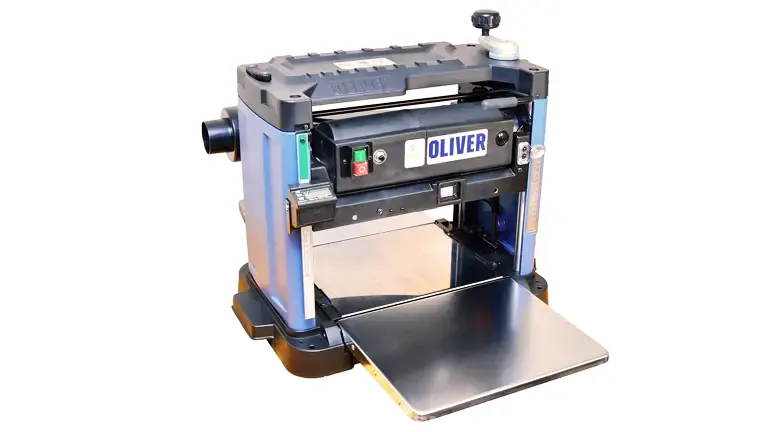

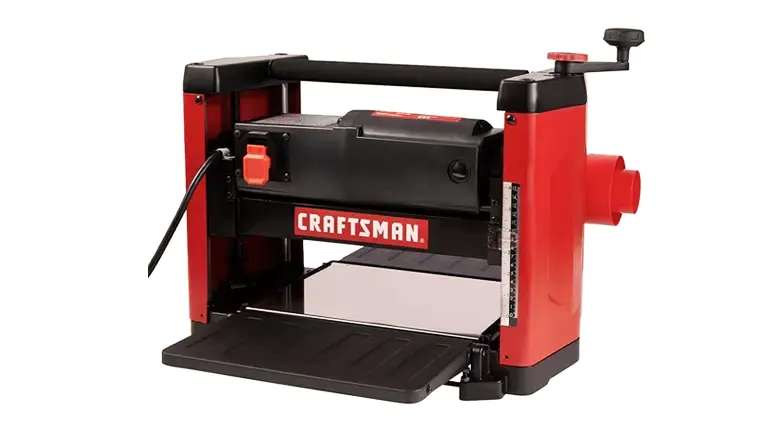
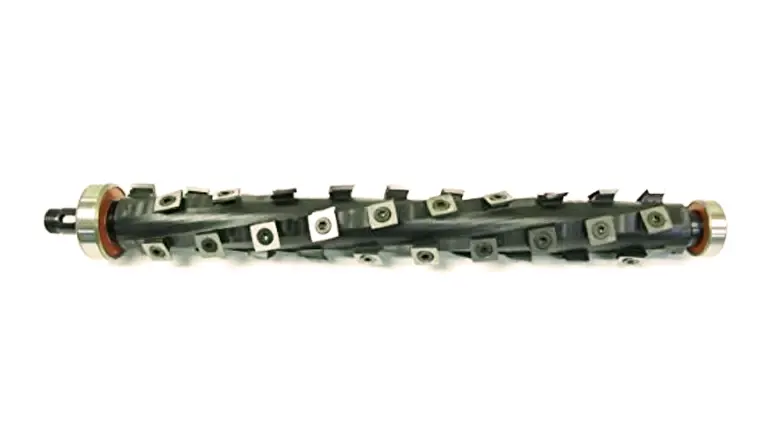




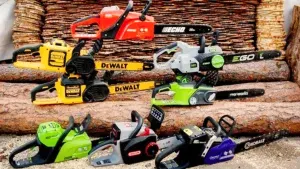



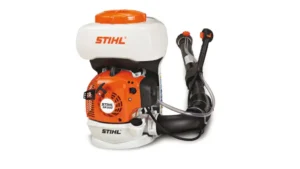



Leave your comment